Decisions, decisions.

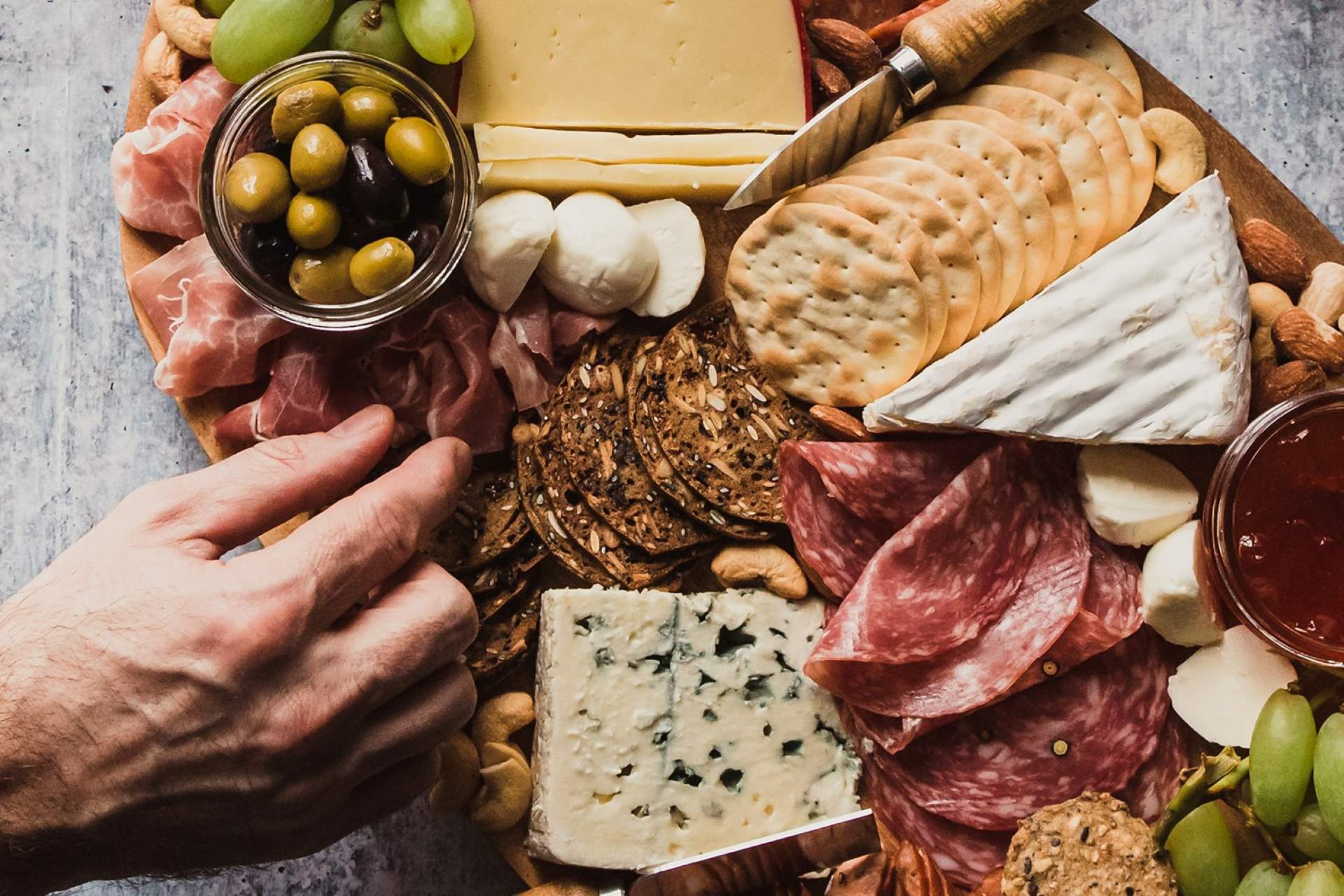
Originally published August 3, 2022. Updated April 25, 2023.
While we love a good butter board, charcuterie boards are still our go-to—and for good reason.
When it comes to entertaining, a charcuterie board is always a crowd-pleaser. It’s a delicious and visually stunning way to feed your guests, with minimal cooking and maximum impact. Ideal for a snack, appetizer or full meal, the perfect charcuterie board offers up much more than a choice between Gouda and goat, which means there’s something for everyone.
Ready to take your charcuterie game to the next level? Follow these tips to create an impressive board for any occasion.
Hungry for more? Explore our recipe library for ideas and inspo for your next gathering!
The first step in creating a charcuterie spread is selecting the right board.
The board should be large enough to hold all your meats, cheeses and accompaniments without feeling overcrowded. You can use a wooden board, marble tray or even a large platter. Consider the theme of your party and the colors you want to incorporate when choosing your board.
The natural elements of these types of serving platters can elevate your charcuterie board and make it feel more elegant. In a pinch, use large plates or platters—this option is great for entertaining, as you can place them around the room for easy access.
For a casual but decadent display, consider creating a countertop or tabletop spread. Cover the surface with clean butcher or parchment paper, then display the food items in an aesthetically pleasing way. Use cake stands and cloches, appetizer plates and bowls to add levels and interest.
And don’t forget the cheese knives!

You don’t have to be a cheese monger to know how to select the best cheeses for your charcuterie board. A varied selection of colors, textures and flavors is the best way to offer something that everyone will enjoy.
Consider a variety of soft and hard cheeses, such as Brie, cheddar, Gouda and blue cheese. You can also add some unique cheeses like goat cheese, smoked cheese or truffle cheese for flavor variety.
While it isn’t necessary to serve every type of cheese, ideally, you should aim to have one choice from each of the following:
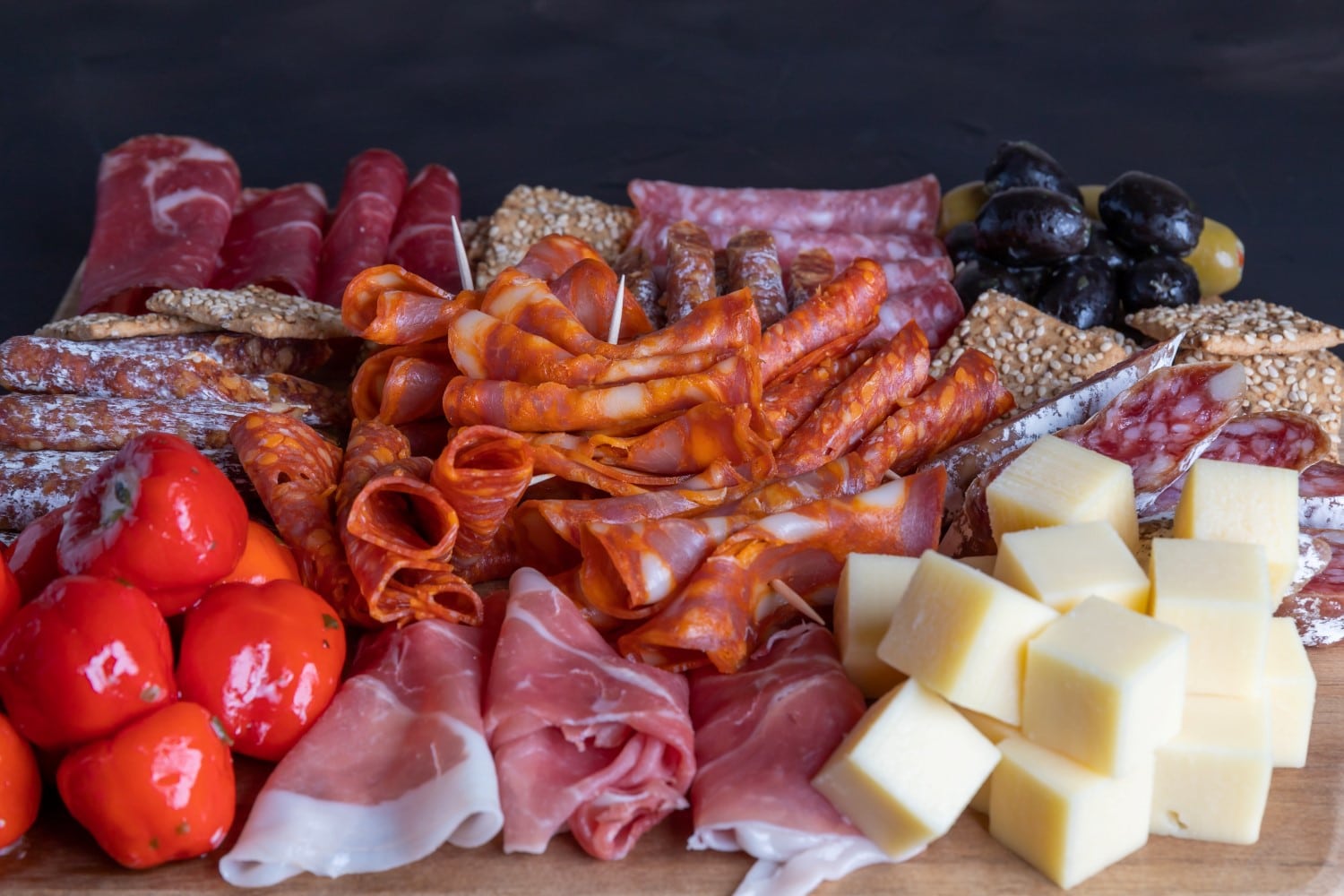
When it comes to selecting meats for your charcuterie board, it’s important to find a balance of flavor and texture. Consider including cured meats, like prosciutto, salami and chorizo, as well as cooked meats, like ham or roast beef, and some spreadable meats like pâté or terrine.
Just remember, quality is everything. Each slice or schmear is going to be eaten and savored alone or on something simple like crackers, so there’s no hiding the quality of ingredients.
Here’s what we normally look for:
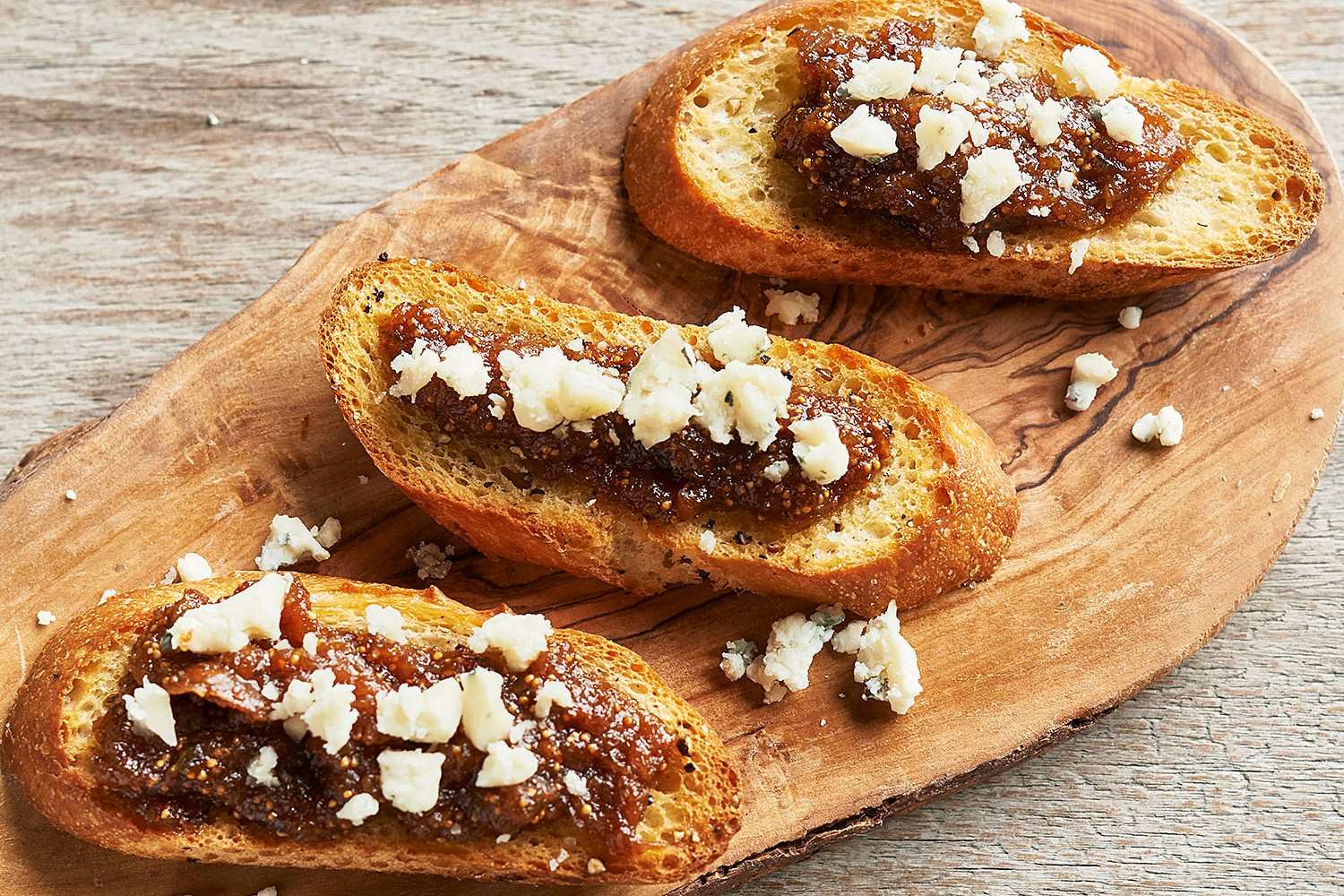
The accompaniments on your charcuterie board should complement your meats and cheeses. Consider adding some fresh or dried fruits like grapes, apricots or figs. You can also include some nuts, like almonds or walnuts, and some olives or pickles for a salty contrast. Don’t forget to add some crackers or bread to the board as well.
You can even buck the “meat and cheese only” idea for more satisfying options. Intermix some warm finger foods such as crostini with homemade fig jam, baked olives or stuffed mushrooms for some variety.
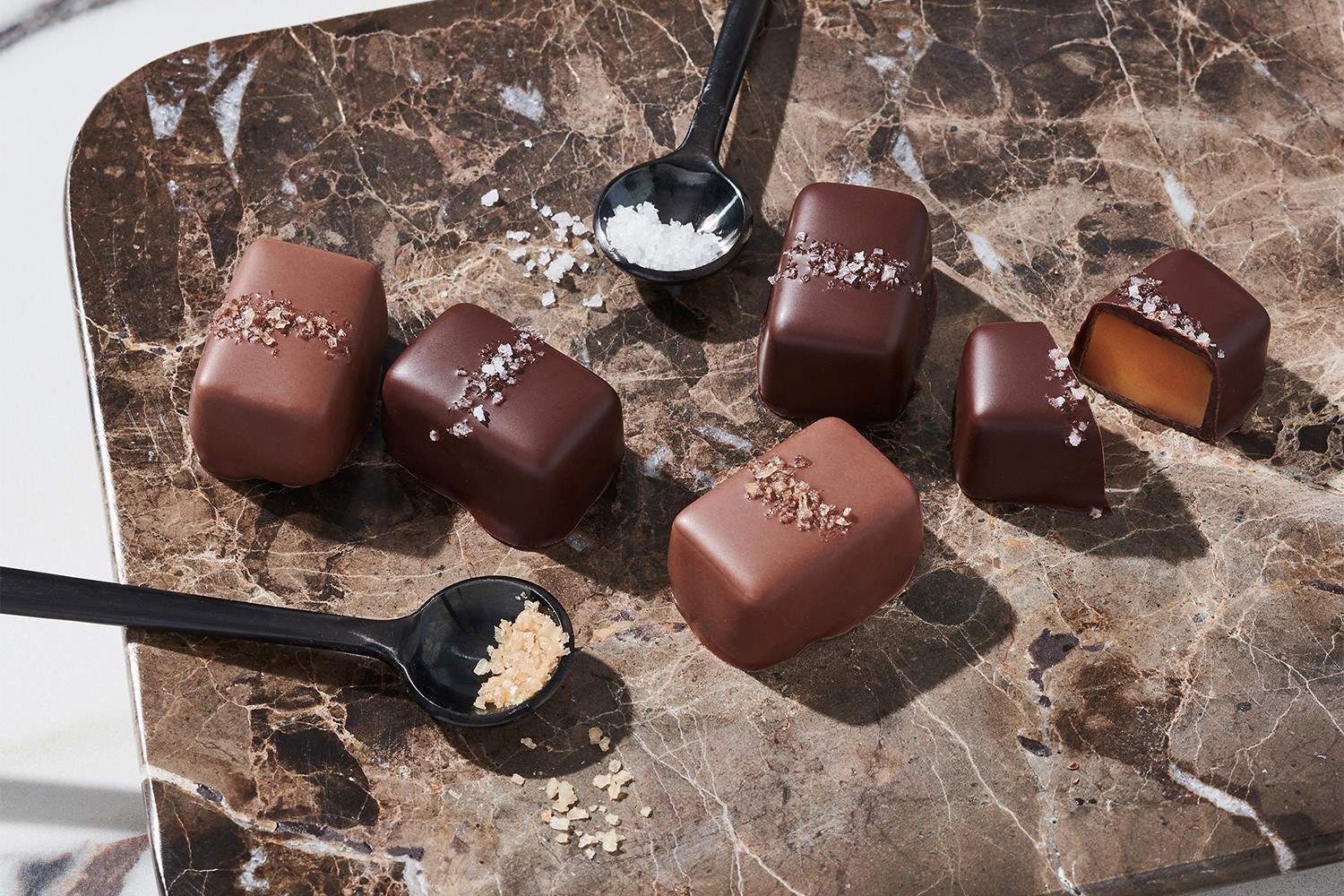
There’s something about the savory creaminess of cheese that just pairs so well with the juiciness of fresh fruit.
Whether it’s a bunch of crisp grapes, a bowl of ripe berries or the tangy, stickiness of dried apricot, you really can’t go wrong adding some fresh or dried fruit to your charcuterie board.
If you’re looking for something with a little more “oomph,” opt for syrups, dips and fruit jams to complement the cheeses’ flavors and textures. You can even sprinkle some chocolate chips, candied nuts or shaved coconut around your charcuterie board for a little extra sweetness.
You could create an infinite number of charcuterie boards with pickled items alone, as there are so many varieties to choose from.
Dill pickles and cornichons are popular choices for that more traditional pickle flavor. You can also pickle your own vegetables, like peppers or onions, for a surprising tang and crunch.
Olives tend to be the most obvious choice due to their earthy flavor and the way they mingle with a variety of cheeses and meats.
The beauty of charcuterie boards is that you can dress them up however you wish—and there’s nothing that screams “host with the most” like a charcuterie board that’s been dressed up to match the season.
The key is to use farm-fresh ingredients that are in season that time of year. Think toasted pumpkin seeds and apples in the fall, orange slices and cranberries in the winter, green beans and apricots in the spring and strawberries and basil in the summer.
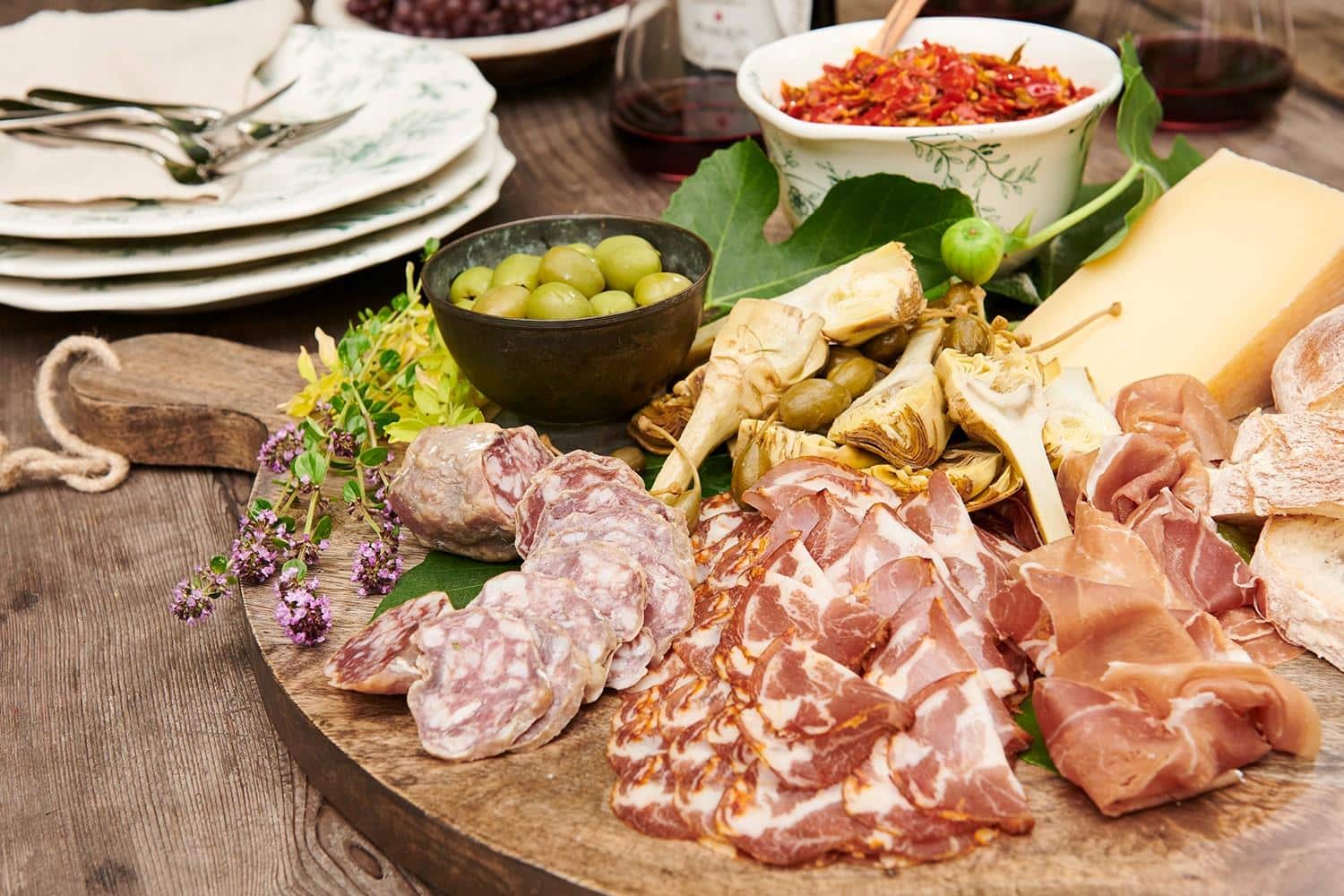
When it comes to arranging your board, aim for symmetry and balance.
Start by placing your meats on the board, then add your cheeses. Add your accompaniments in groups, arranging them by color and texture. Don’t be afraid to get creative with your arrangement, and remember that the board should look full but not overcrowded.
The easiest way to build your charcuterie board is to start with the largest items. Put out large blocks of cheese and bigger bowls. Then, fill in the smaller spaces with crackers, breads, rolled meats and salami slices. Place small bowls, nuts and other items in the remaining nooks. If you still have empty space, fill it with fresh, green herbs such as rosemary and thyme.
No charcuterie board is complete without a delicious glass of wine to pair with it. We’ve found that rosé, crisp white wines like pinot grigio, Riesling and prosecco as well as lighter red wines like barbera, Lambrusco and Beaujolais pair best with a charcuterie spread.
The reason being the high acidity in these wines helps cut through the salt and fat, while the white wines’ citrus notes and red wines’ fruit-forward flavors provide a refreshing balance to the palate.
Hungry for more? Explore our recipe library for ideas and inspo for your next gathering!
Charceuterie plater is good for a party. Some good food lay out to eat for people share.
I like to eat good foods. I cook good foods not only Chinese and provencal foods I can cook and eat.